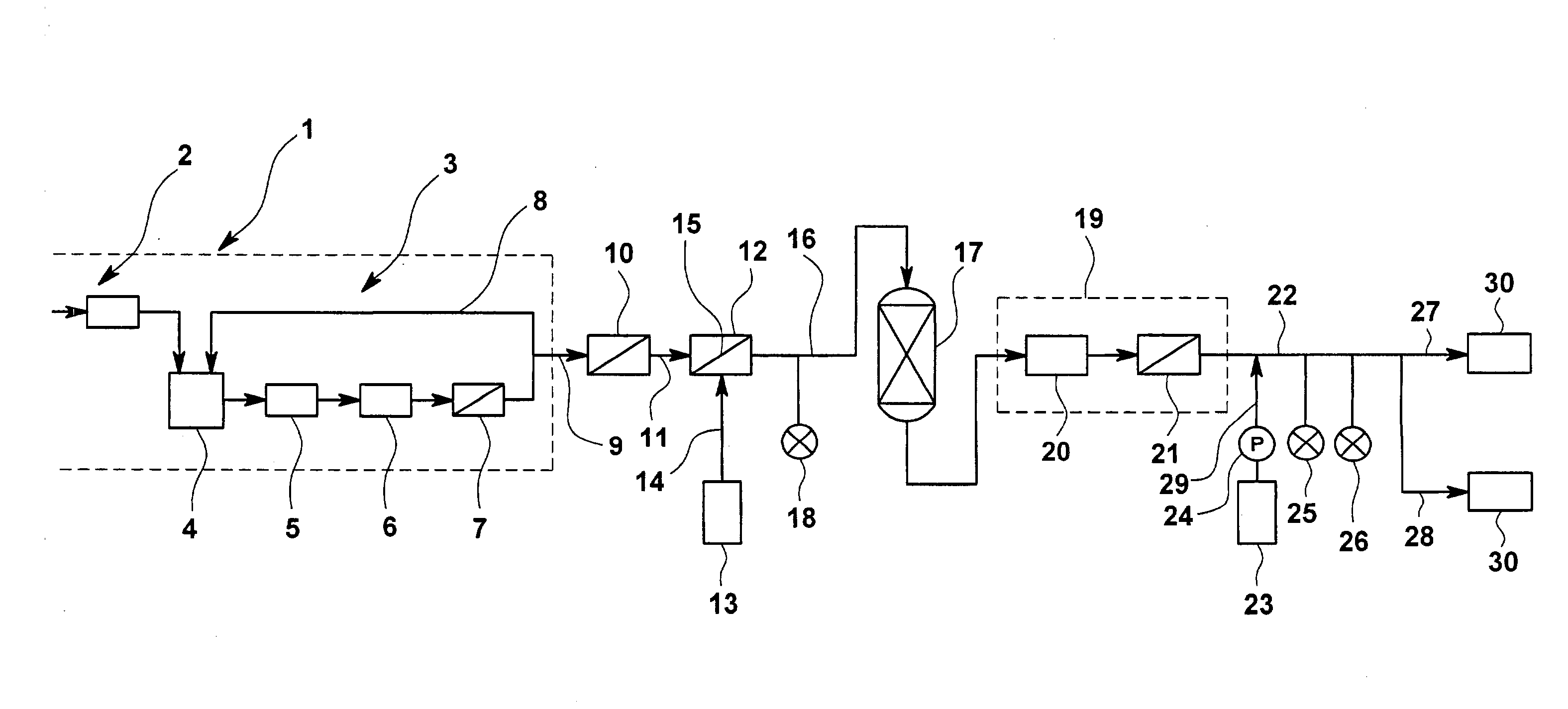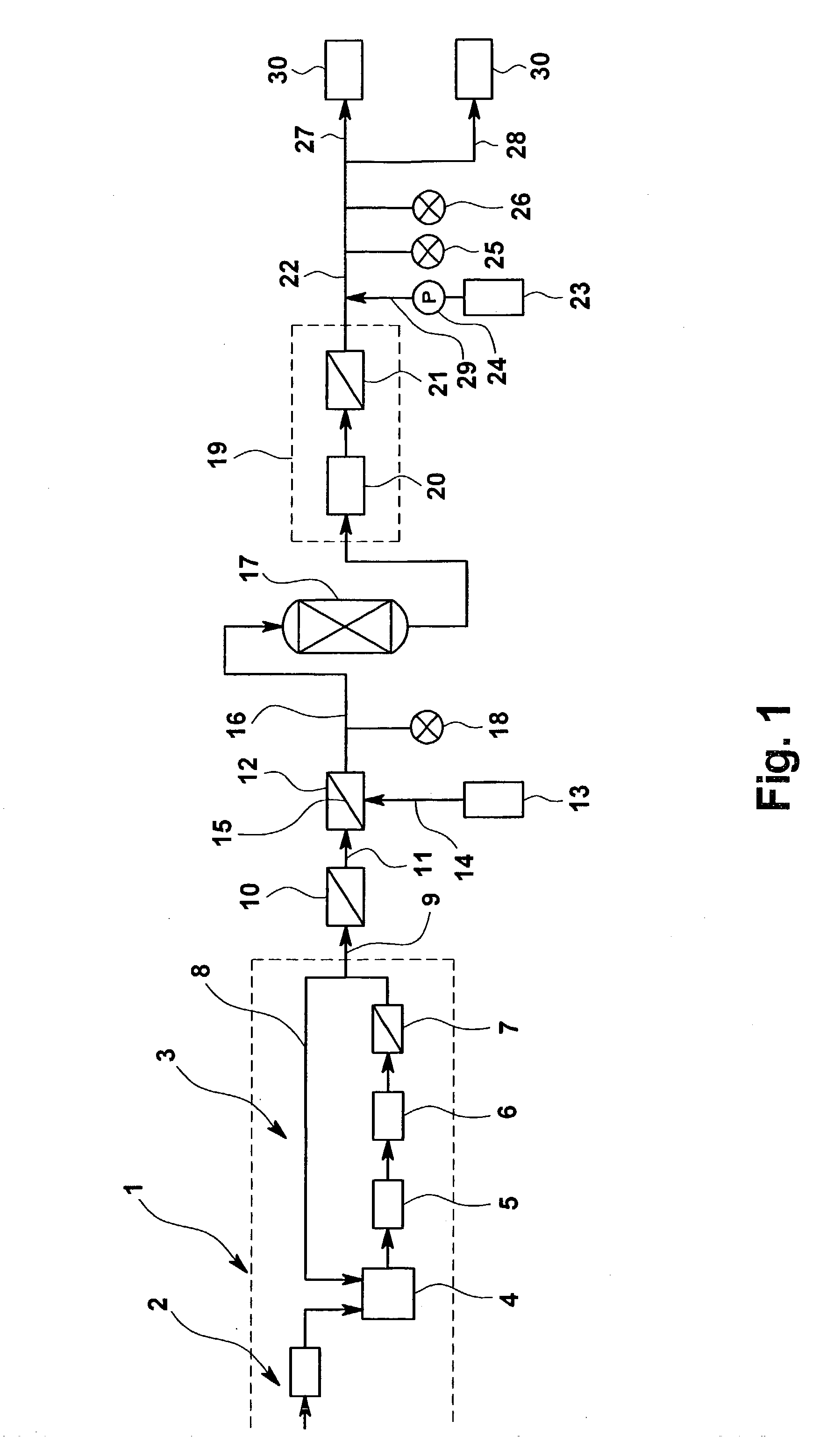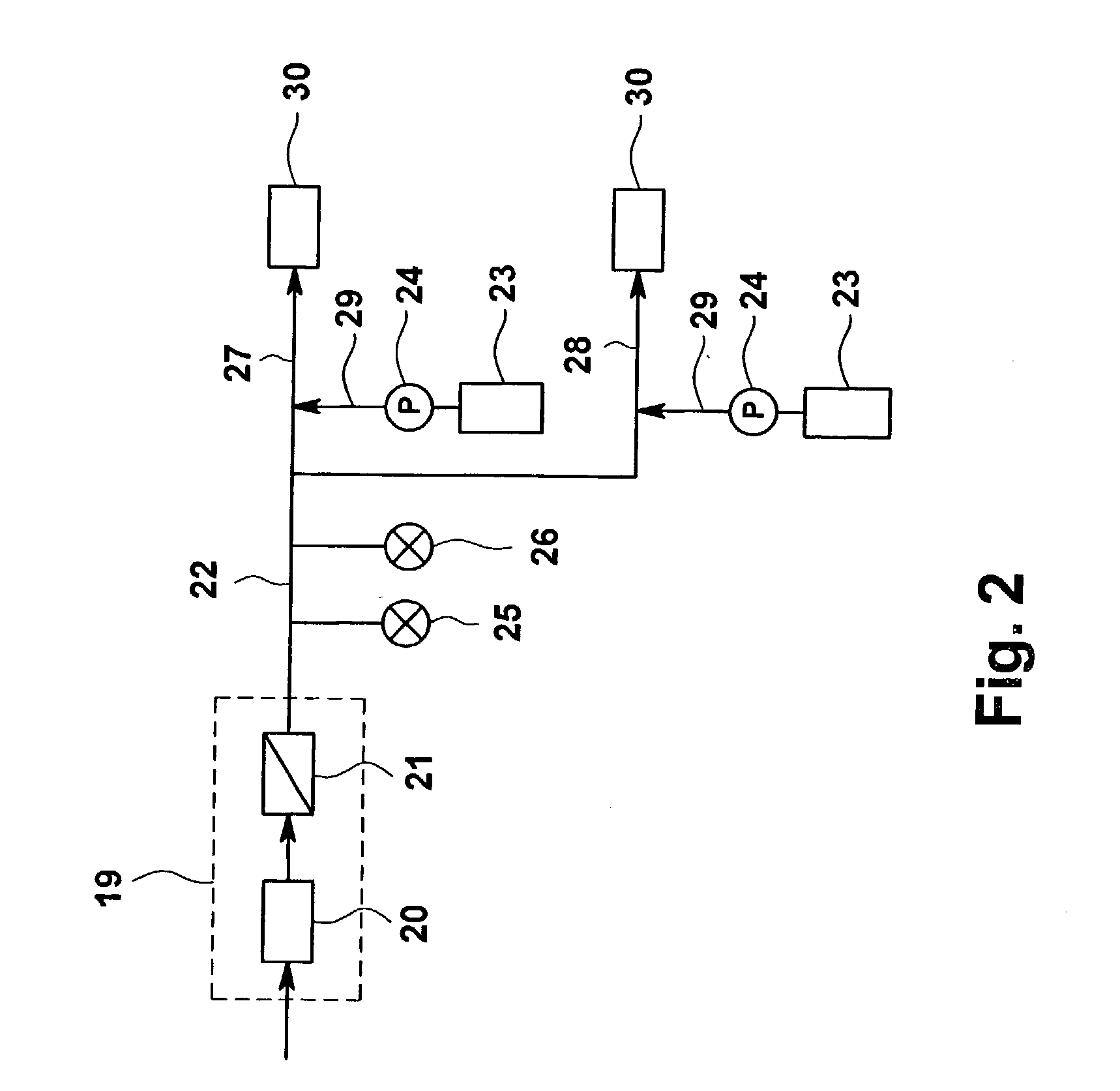Hydrogen-dissolved water production apparatus
a technology of water production apparatus and water soluble, which is applied in the direction of water/sewage treatment by ion exchange, non-contaminated water treatment, and separation with moving sorbents, etc., which can solve the problems of reducing the reliability of insulated film, and reducing the reliability of sorben
- Summary
- Abstract
- Description
- Claims
- Application Information
AI Technical Summary
Benefits of technology
Problems solved by technology
Method used
Image
Examples
Embodiment Construction
[0025] Preferred embodiments of the present invention will now be described with reference to the drawings.
[0026] FIG. 1 shows an example structure of an apparatus according to the present invention. In FIG. 1, reference numeral 1 denotes a high-purity water production apparatus. The high-purity water production apparatus comprises a primary deionized water production device 2 and a secondary deionized water production device 3. Although not shown, the primary deionized water production device comprises, for example, a coagulation and sedimentation device, a sand filter, an activated carbon filter, a reverse osmosis membrane device, a two-bed 3-tower ion exchange system, a mixed-bed ion exchange system, and a micronic filter. The primary deionized water production device produces primary deionized water by carrying out a pretreatment of raw water using the coagulation and sedimentation device, the sand filter, and the activated charcoal filter and then carrying out a treatment consi...
PUM
 Login to View More
Login to View More Abstract
Description
Claims
Application Information
 Login to View More
Login to View More - R&D
- Intellectual Property
- Life Sciences
- Materials
- Tech Scout
- Unparalleled Data Quality
- Higher Quality Content
- 60% Fewer Hallucinations
Browse by: Latest US Patents, China's latest patents, Technical Efficacy Thesaurus, Application Domain, Technology Topic, Popular Technical Reports.
© 2025 PatSnap. All rights reserved.Legal|Privacy policy|Modern Slavery Act Transparency Statement|Sitemap|About US| Contact US: help@patsnap.com



